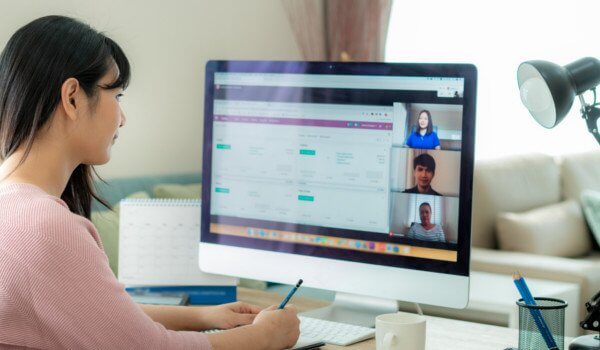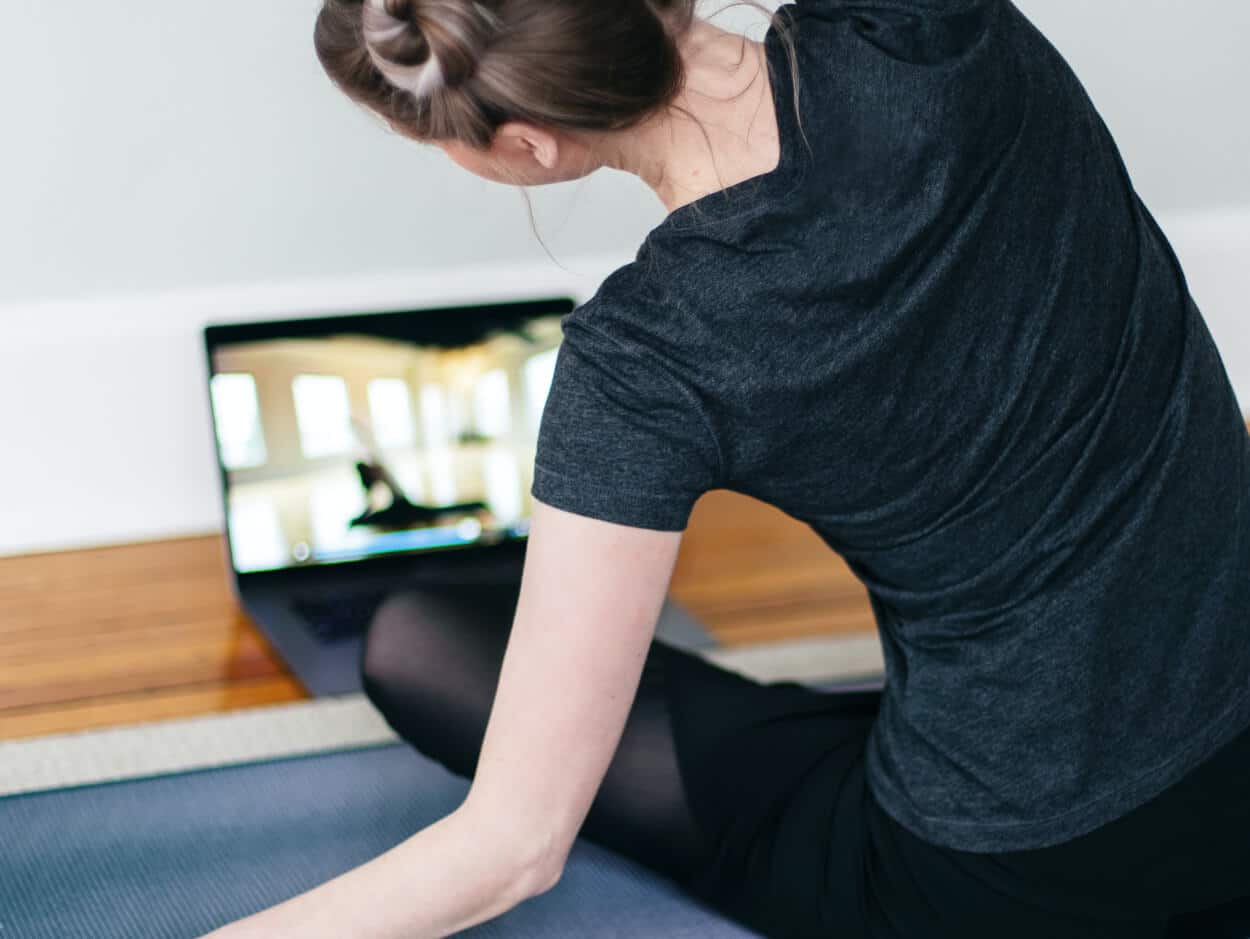
The sudden shift to working from home has taken a huge toll on productivity, innovation, and morale.. Employees are juggling their day jobs alongside other pressing concerns: home-schooling their kids, caring for sick family members, sourcing and sanitizing groceries. And most of them are shouldering these responsibilities in less-than-ideal remote work setups.
The return to work will be a phased, gradual reopening. Here are some strategies that facilities and HR teams can use to boost morale and preserve the employee experience amongst their remote workforce now, during the coronavirus crisis, and even throughout the eventual transition back to the workplace.
Quick links
- Encourage flexible scheduling
- Loan your people the right equipment
- Schedule virtual activities that boost morale
- Arrange online sessions that improve mental and physical well-being
- Communicate clear “return to work” updates
What is employee engagement? Employee engagement refers to the connection that employees feel towards their employer or workplace. More engaged employees are typically more involved and enthusiastic about their company and workplace.
Encourage flexible scheduling
When employees work from home, they’re juggling multiple roles. There’s the role they fulfill for your company. And then there are the other roles—home-school teacher for the kids, live-in carer for any ill family members, chief grocery sanitizer… the list goes on.
Offering flexible schedules can help your people work with and around their unique set of remote-work challenges. Your company can make allowances for this by:
- Relaxing or adjusting company guidelines about meetings
- Encouraging employees to work when they are most productive, and take time to get fresh air at convenient times (where allowable), and take care of their mental health
- Advising middle management to have one-on-one meetings with their team members to see what other accommodations can be made
“Working from home with your children is a productivity disaster. My 4-year-old regularly bursts into the room hoping to find me in a playful mood shouting “doodoo!” – her nickname for me – in the middle of conference calls.”
— Nicholas Bloom, Senior Fellow at the Stanford Institute for Economic Policy Research (SIEPR)
Loan your people the right equipment
If your employees are working from home in cramped or uncomfortable environments, their ability to focus and stay productive will suffer.
So do the rounds and ask your employees about their current work from home setup. See what you can do to provide any missing equipment that could improve their remote-work experience.
Bare-minimum essentials should include:
- Computer equipment: laptops, monitors, stands, and accessories
- Office furniture: desks, ergonomic chairs, good lighting, active workstations
- Essential software and access to necessary files
Take it one step further and let your people ask for equipment to be delivered (or collected) via a tool like Request Manager.
And make sure you use a well-organized spreadsheet or a tool like Asset Tagging to track the whereabouts of any office equipment in your IWMS that you loan to employees during the COVID-19 crisis.
Schedule virtual activities that boost morale
Remote working can get lonely at the best of times. And for many employees, morale is low right now. Scheduling virtual activities that give your people time to work together informally and chat about their families, hobbies, and pets can go a long way to boosting morale in these unprecedented times.
Here are a few virtual activities to consider for your teams:
- Set up casual Slack channels that are dedicated to socializing
- Use a Slack app like Donut to pair employees up for coffee and lunch hangouts
- Set up cross-departmental lunches via video conferencing
- Encourage live working sessions, where you work “separately but together” via Zoom, to enhance productivity and joint projects
- Schedule weekly (virtual) happy hours and lunch-and-learn sessions
Ask employees if anyone would like to set up and lead an online social activity, like an office book club, podcast hangout, or boardgame club

Arrange online sessions that improve physical and mental well-being
Giving your people the time and tools they need to take care of both their physical and mental health should be a top priority.
Help employees focus on their fitness by scheduling daytime team workouts. Peloton is offering a free 90-day trial of its online workouts. Yoga with Adriene and Yoga with Tim are full of free yoga classes and programs.
Even 10- or 15-minute stretching programs can help employees feel refreshed and combat the ergonomic challenges they may be dealing with at their work from home setup.
HR and facilities should also consider hosting virtual sessions and resources that improve mental and emotional well-being. It’s easy to host group mindfulness and meditation sessions with a video conferencing tool like Zoom and an app like Headspace, Calm, or Shine.

Communicate clear “return to work” updates
As companies plan to transition their employees back into the office, employees will have plenty of questions and concerns about new protocols like social distancing, office visitors, personal responsibility, and enhanced cleaning.
Providing clarity and transparency into your company’s “Return to Work” plan is essential for building trust and managing misinformation.
At the time of writing this guide, elected officials were pushing to formalize coronavirus workplace guidelines in the US. Until those guidelines exist, it’s up to each individual organization to create and communicate their expectations and workplace practices.
Here are some key pointers to keep in mind:
- COVID-19 guidelines are changing frequently, so make sure you provide updates on a regular basis. Create a schedule of virtual meetings to ensure everyone is being looped in on updates, expectations, and next steps.
- Ask leaders to host one-on-one meetings with each of their team members, to give individual employees the opportunity to voice and address personal concerns in private.
- Actively outline that health and safety are top priorities, and make this information a part of regular company messaging before employees begin to return to work.
- Make sure your guidelines are easily accessible. Slack, email, and internal wikis are a great place to disseminate and store workplace documentation.
If you’re still in the process of creating your organization’s “return to work” plan, refer to the CDC’s COVID-19 workplace guidelines and our guide, After COVID-19: returning to the workplace in a post-coronavirus world, for some ideas on how to prepare and distribute your organization’s return to work plan.
How is your organization preserving its employee experience?
There’s no denying it. Working from home isn’t working for everyone. Until we know how and when the return to work will begin, actively preserving the employee experience and the well-being of your employees is going to be a huge priority for facilities and HR teams around the world.
Comment below or send us a tweet to let us know how you’re going about this process with your people.
Photo Credits: CDC, energepic, Julia M. Cameron, Kari Shea, Pexels, Unsplash



